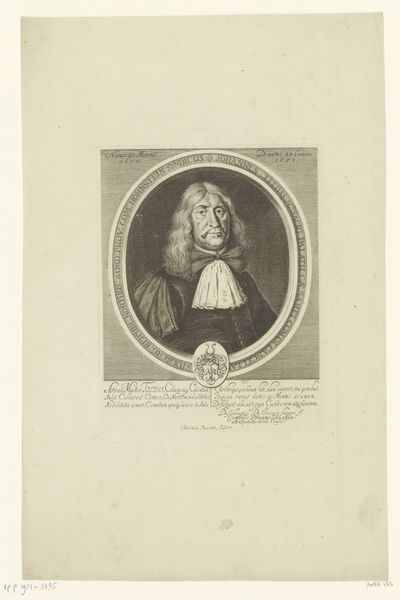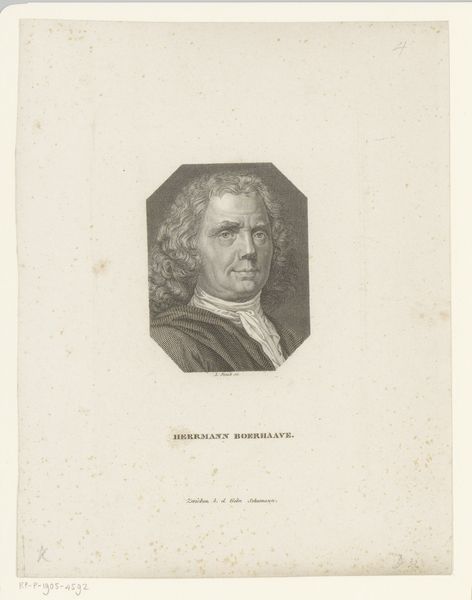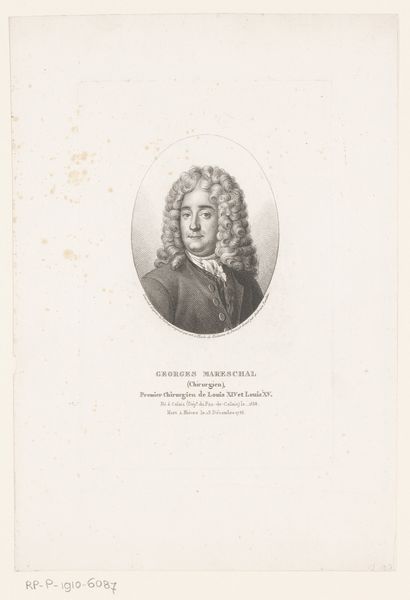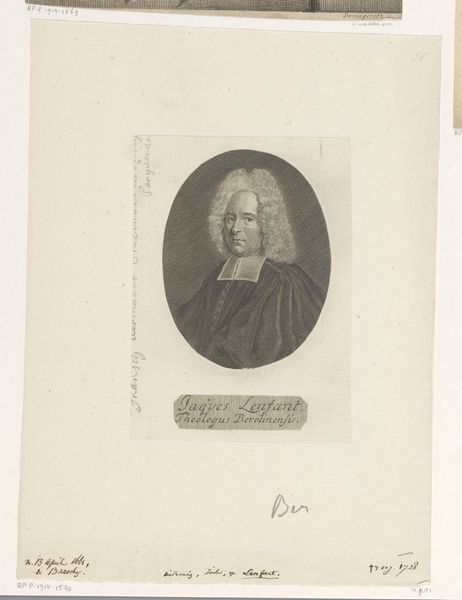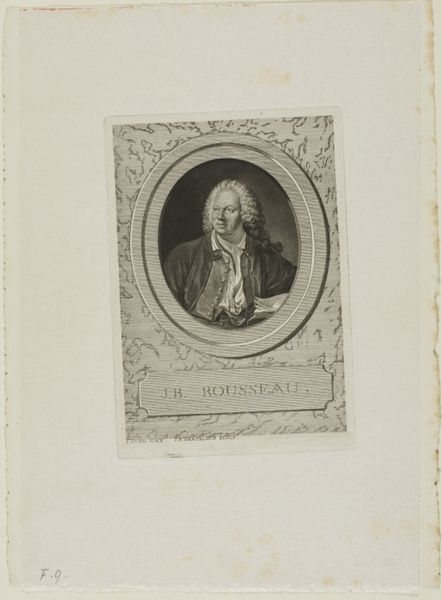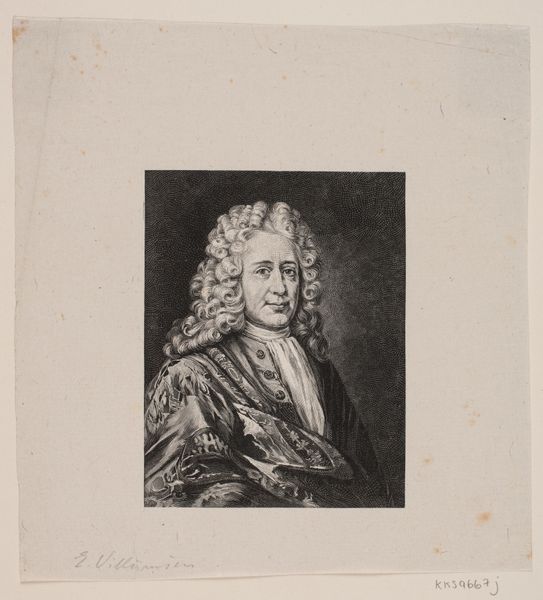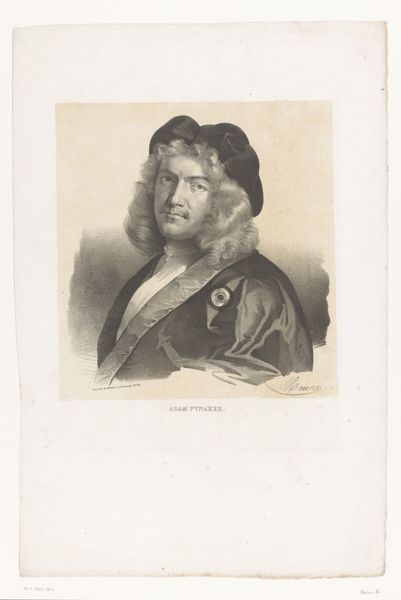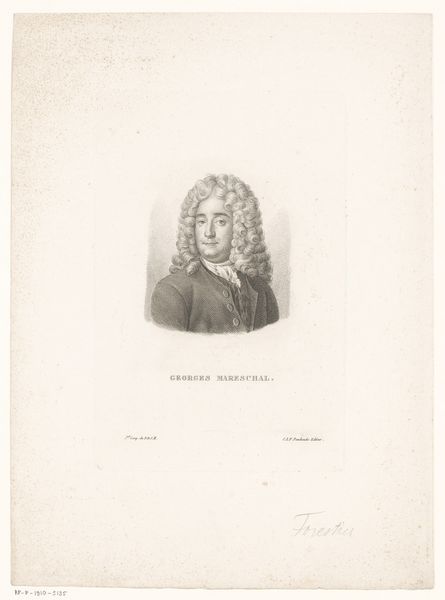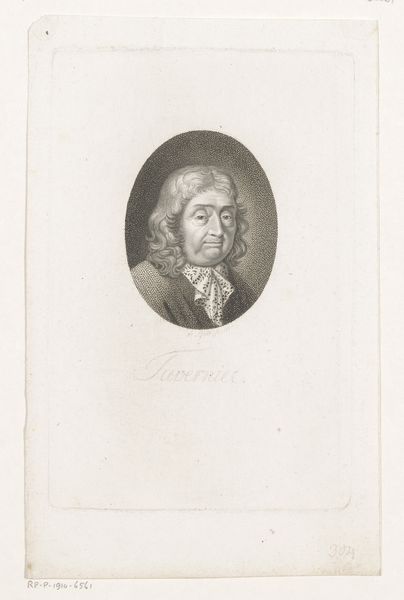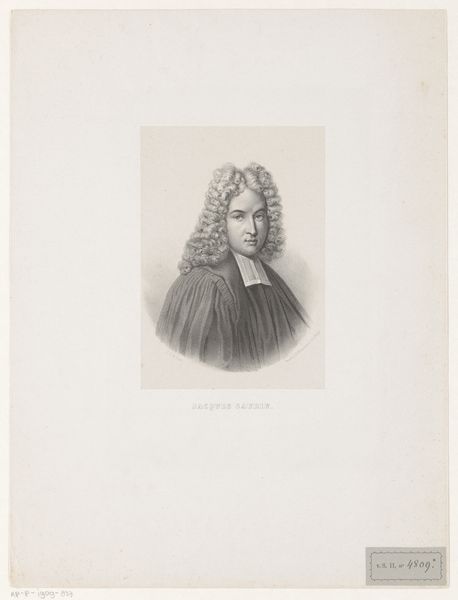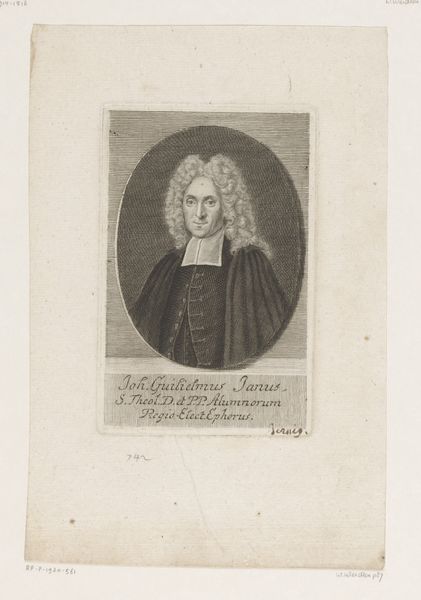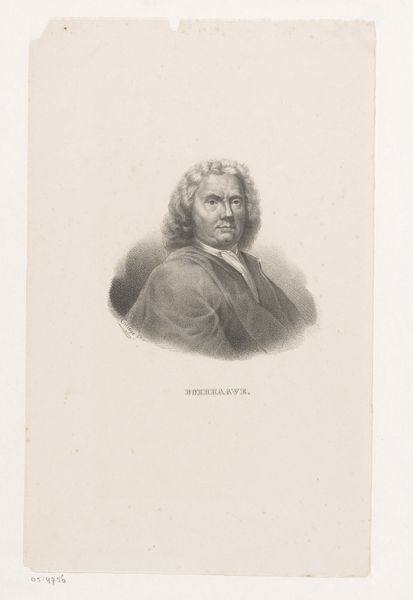
Dimensions: height 256 mm, width 205 mm
Copyright: Rijks Museum: Open Domain
Curator: This is a portrait engraving of Albrecht von Haller by Ernst Rauch, likely created sometime between 1807 and 1899. Editor: Immediately, I notice the almost severe contrast between the meticulous detail of the figure and the stark emptiness of the aging paper around it. It's quite striking. Curator: Indeed. The use of engraving allows for an incredibly precise rendering of Haller's features. Notice the intricate lines defining his wig, the folds of his coat, the very texture of his skin. Editor: The portrayal reflects a time when portraiture was a powerful tool of social validation. How do you think it was received? Was it purely an homage? Or something more nuanced, maybe contributing to the shaping of Haller’s public image? Curator: Portraits of this era absolutely served to establish and solidify one's position in society. In terms of composition, the octagonal frame draws focus on the individual, almost like setting the subject up on a stage for observation. Editor: Speaking of composition, the blank space dominates the frame; was paper this scarce, or what aesthetic decision caused this effect? To me, it speaks volumes about the era, perhaps echoing sentiments of that period. Curator: I find the space quite deliberate. It emphasizes the sitter’s prominence while allowing the details within the portrait itself to speak louder, the contrast, again, enhances those engraved elements, inviting the eye to linger. It certainly does feel reflective of its time; that stark simplicity, not too decorative, focusing on the essence of the man, rather than ornamentation. Editor: Seeing it displayed now, separated by time and context, really shifts its meaning. It transcends the literal and offers us insights into cultural ideals around representation. Curator: Absolutely. And when observing the engraver's marks and linear detail, one may begin to decode visual meanings within an eighteenth-century semiotic system. I'm very appreciative of your insight. Editor: Thank you. Examining art within a cultural framework allows for engagement with our shared visual culture, highlighting that these old pieces communicate narratives about social mores, status, and individual representation. It becomes quite significant.
Comments
No comments
Be the first to comment and join the conversation on the ultimate creative platform.
